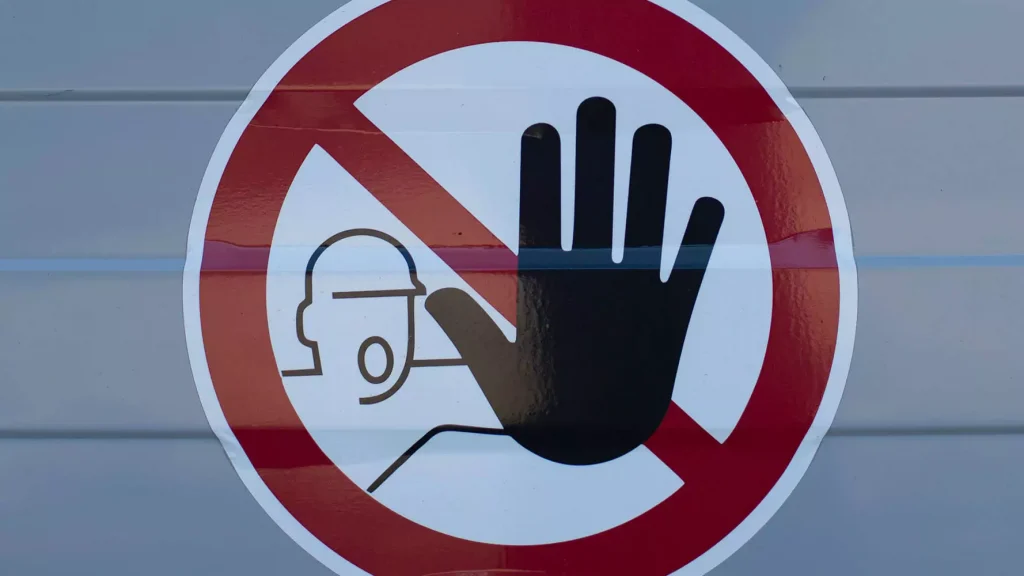Let’s face it, bad clients are like pesky critters in the wild. Eventually, you’re gonna run into one.
But don’t blame yourself for encountering one, because it’s not always easy to spot a bad client from the get-go.
The thing is, they don’t just materialize out of thin air, they’re created by freelancers just like you and me.
So, if you’re self-employed and want to avoid these lemons, you gotta learn how to spot ’em and handle ’em before they drive you crazy.
Trust me, it’s not always black and white, but with a little bit of know-how, you’ll be able to navigate the wild world of freelancing with ease.
First impressions matter
You know the saying, “First impressions are everything”? Well, it’s true.
When you’re meeting a new customer for the first time, remember that it’s not just them judging you – you’re also sizing them up.
Trust your gut instincts and pay attention to those initial impressions.
If something feels off about the other person, it could be a red flag for potential issues down the road.
Your job during that first interview with a client is to spot those red flags and figure out what kind of person you’re dealing with.
Don’t underestimate the importance of that initial contact, it’s when the roles are defined in the working relationship.
Who are the Clients From Hell?

The Cheapskate
Meet the Cheapskate. Their go-to phrase is “How much does it cost?” and they’ll ask it within the first 5 minutes of the conversation. And then again at 10 minutes and 20 minutes.
Trust me, if you’re hearing this question over and over, they’re only looking for the lowest price and couldn’t care less about anything else.
These guys want the cheapest deal, no matter what. They don’t care about the value you can bring to their business or the problems you can solve. All they want is to spend as little as possible.
Now, it’s not always that they’re just being cheap. They may not know how much things cost or don’t understand that services aren’t like commodities.
It’s up to you to educate them.
They may have had a bad experience with a freelancer before and are hesitant to invest again. Or maybe, they just don’t have the money.
Dealing with this type of client can be a bit of a headache, but it’s all about focusing on the value of your services. Make it clear how you can help solve their problems and the price shouldn’t even be up for discussion. People are willing to pay more for quality solutions, but it’s your job to show them that from the get-go. If they can’t see beyond the price, it’s probably best to just walk away from the project.
The Simplifier
Meet the “It’s a breeze” client. Their favorite phrase is “It shouldn’t take long, it’s easy!” and they assume everything takes just a few minutes.
Whether it’s writing a book, designing a logo, or creating a Facebook marketing campaign, they think it’s all just a matter of a couple of clicks in Photoshop.
These guys only focus on the end result and don’t care about the process it takes to get there. They’re always looking for shortcuts that end up causing problems for everyone involved.
This is especially common in professions where the result is visual, like illustration or design.
The root of this attitude is ignorance and that’s okay.
As a professional, you gotta remember that the reason a client hires you is because they don’t know how to do something. They have no obligation to know how to do your job.
Dealing with this type of client can be a bit of a challenge. But a big part of your job is going to be educating them.
Explain to them how much work is behind the results they see and why something that looks easy at first glance is actually not easy at all.
The Scope Creep
Meet the Scope Creep. Their favorite phrase is “Can you do this little extra task?” and they’ll always ask for something more than what you’ve already agreed upon.
For free, of course.
They may not seem like a big deal at first, but trust me, this customer doesn’t respect your time and effort. If they did, they’d be willing to compensate you accordingly.
Like the Cheapskate, they want to save money by getting you to do things that aren’t included in the original contract. They’ll make it seem like it’s just a small favor, but if you’re not careful, the project can quickly spiral out of control and exceed any budget.
The cause of this behavior could be that they don’t understand the limits of the project and think what they’re asking for is included.
Or they might be testing to see if you’ll say yes and do it for free.
Dealing with them is all about setting clear boundaries and being firm. Make sure they know what’s included in the project and what’s not.
If they ask for something extra, renegotiate your rates. More work equals more money. And if they refuse, remember that it’s okay to say no.
The “Always on”
Their favorite phrase is “Why don’t you pick up the phone at 3 am??” and they expect you to work, eat, and breathe just for them.
Everything is always an emergency and they’ll hit you up with constant emails, Skype chats, and phone calls at all hours.
They have zero respect for your time and want everything done by yesterday. Even before you sign the contract, you’re already behind.
These customers are always asking for updates and tend to be micromanagers. They can’t understand that their constant interruptions only delay the work even more. They’re disorganized and can drive you crazy if you don’t set strong limits.
The reason behind this behavior is usually that they’re overwhelmed by everything going on in their business and expect you to care just as much. They don’t understand that you have other jobs and a life outside of the computer.
They tend to project their insecurities onto your work and that’s why they can be so annoying.
Dealing with this type of client can be a bit of a challenge, but the key to surviving this relationship is to define boundaries and expectations.
It’s your responsibility to deliver on time and on budget and to set healthy limits when it comes to working schedules and project completion times.
And if the client can’t respect those boundaries, remember that you don’t have to answer the phone 24/7.
The Ghost
Meet the Ghost client, the master of disappearing acts. One minute they’re all over you, talking about their grand plans and how you’re the only one for the job. And the next, poof! They’re gone. No more answering emails, calls, or even smoke signals.
They might disappear for weeks, months, or even years (it’s happened to me, and let me tell you, it’s not a fun feeling).
You’ll be left wondering if they were just a figment of your imagination or if they were just playing hard to get. But trust me, they’re not coming back. It’s like trying to catch a unicorn, it’s just not gonna happen.
The reason for this behavior could be that the project gets put on hold or cancelled and they don’t know how to tell you. They’d rather ghost you than just come out and say they’re firing you.
Or maybe they found someone else for the job or just don’t value the professional relationship between the two of you.
Dealing with this type of client is pretty much impossible because they’re impossible to find.
The key here is to not take it personally and to always have a backup plan. Make sure you charge a percentage upfront, so if they do disappear, you’ll at least have something to show for it. And remember, there is plenty of other fish in the sea (or clients in the market), so don’t let one ghost ruin your day.
Don’t be afraid to say “no”

Listen up freelancer, it’s time to put yourself first.
It can be tough, especially when work is scarce, but constantly giving in to unreasonable client requests is not a sustainable way to run a business.
The idea that just because you’re a freelancer, you have to accept any and every client that comes your way is total BS.
Clients aren’t always right, and it’s important to remember that.
Working with people who don’t respect you is not only a bad pass, but it can also start to impact the way you view your business.
But here’s the thing, saying “no” and setting boundaries is healthy!
Don’t be afraid to exercise your right to refuse a client. You’re not going to be out of a job just because you didn’t take on every single person who walks through your door.
And remember, it’s important to own your role in a bad working relationship. There are no such things as bad clients, only freelancers who choose to work with them.
Have you ever taken on a bad client? Share your horror stories in the comments, and let’s commiserate together!




0 Comments